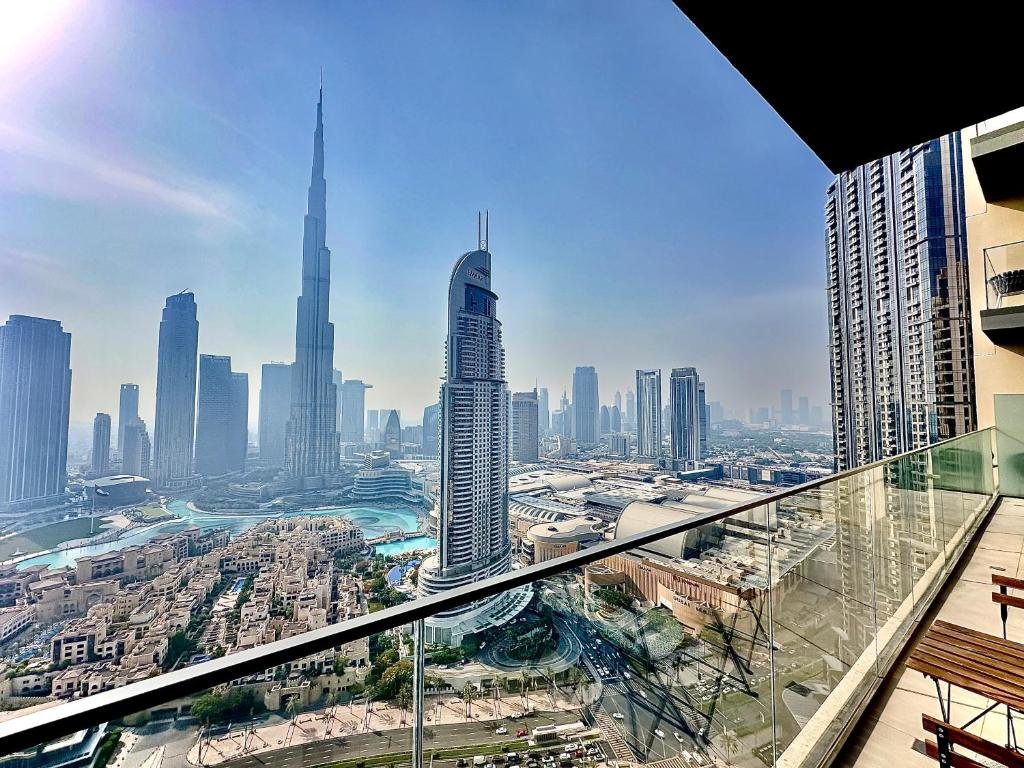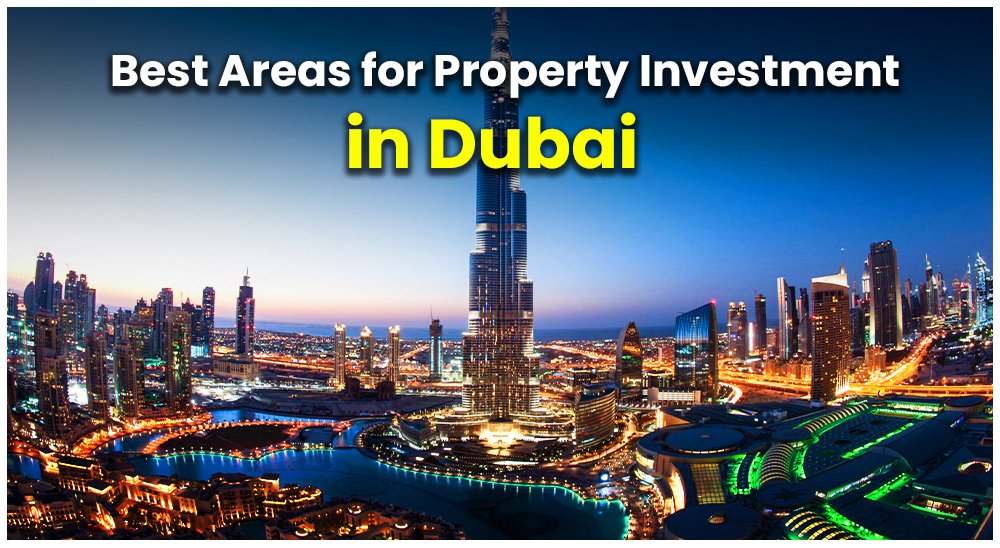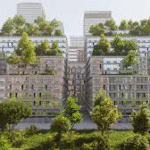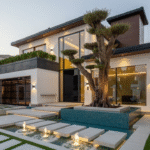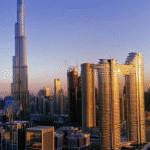Now Reading: Emaar vs. Damac: Which Developer is Better for UAE Real Estate in 2025?
-
01
Emaar vs. Damac: Which Developer is Better for UAE Real Estate in 2025?
Emaar vs. Damac: Which Developer is Better for UAE Real Estate in 2025?

Table of Contents
Emaar Properties and Damac Properties are two of Dubai’s leading real estate developers, shaping the UAE’s AED 893 billion market with iconic projects and luxury offerings. As of June 2, 2025, at 3:09 PM IST, both developers cater to investors, expats, and families, with Emaar known for master-planned communities and Damac for opulent, branded residences.
This comparison evaluates Emaar and Damac across key factors—reputation, project quality, investment returns, location, sustainability, and resident experience—integrating your interest in UAE property trends, smart homes, and prior queries on off-plan projects and visa eligibility. Insights are drawn from market data, developer portfolios, and sentiment from web sources and X posts, with no single developer deemed universally “better” but rather suited to different priorities.
- Market Context: UAE real estate market at AED 893B in 2024, 23% YoY growth in Dubai (AED 143.1B Q1 2025), 60% off-plan sales, per Dubai Land Department (DLD).
- Developers: Emaar (founded 1997) and Damac (founded 2002), both Dubai-based, dominate luxury residential, commercial, and hospitality sectors.
- Focus: Comparison across reputation, project quality, ROI, location, sustainability, and resident experience, tailored to investors, families, and expats.
- Relevance: Aligns with your interest in UAE property trends, smart homes, off-plan projects, and visa eligibility.
Comparison Criteria
1. Reputation and Track Record
- Emaar Properties:
- Overview: Founded in 1997, publicly listed, government-backed (Dubai government holds ~30% stake), operates in 36 markets globally.
- Notable Projects: Burj Khalifa (world’s tallest building), Dubai Mall (world’s largest mall), Dubai Marina, Downtown Dubai.
- Reputation: Renowned for reliability, with 95%+ on-time delivery and projects sold out pre-launch due to high demand. Named “UAE’s Strongest Real Estate Brand” (YouGov) and “Most Innovative Developer” (Arabian Business Real Estate Awards).
- Resilience: Strong financials (AED 8.2B net profit in Q1–Q3 2023, 42% YoY growth), weathered 2008 and 2020 crises effectively.
- Sentiment: Positive investor trust, though some residents cite strict community rules (e.g., Downtown Dubai).
- Damac Properties:
- Overview: Founded in 2002, privately owned by Hussain Sajwani, delisted from Dubai Financial Market in 2022, operates in UAE, Saudi Arabia, UK, and more.
- Notable Projects: Damac Hills (golf community with Trump International Golf Club), Damac Lagoons (Mediterranean-inspired), Cavalli Tower.
- Reputation: Known for luxury and brand collaborations (e.g., Versace, Fendi, Trump). Awarded “Best Luxury Real Estate Developer” (Arabian Business Awards). However, early history faced criticism for build quality (pre-2008).
- Resilience: Survived 2008 crisis by refunding buyers and completing projects, though reported AED 1.04B loss in 2020 vs. Emaar’s profit drop. Strong 2024 cash reserves (~USD 5B).
- Sentiment: Mixed; praised for luxury but criticized for delays and quality in some projects. X posts highlight frustration with Damac vs. Emaar’s reliability.
- Verdict: Emaar has a stronger, more consistent reputation due to government backing, global presence, and proven delivery. Damac excels in niche luxury but lags in perceived reliability.
2. Project Quality and Design
- Emaar:
- Design: Modern, elegant architecture with premium finishes, collaborating with global architects (e.g., Armani for Burj Khalifa). Focus on functionality and community integration.
- Quality: High construction standards, though some newer projects (e.g., Dubai Hills) report minor snagging issues (e.g., cracks).
- Smart Homes: IoT-enabled features in projects like Vida Residences (smart thermostats, lighting), saving 10–15% utilities, per Emaar.
- Examples: The Watercrest (Mohammed Bin Rashid City, AED 6.9M villas, Q4 2027 handover), Bayview by Address Resorts (Emaar Beachfront, AED 1.2M apartments).
- Damac:
- Design: Bold, opulent aesthetics with luxury brand collaborations (e.g., Cavalli Tower, Versace-designed interiors). Emphasizes extravagance over subtlety.
- Quality: Improved significantly, but varies by project. Damac Hills and Lagoons praised, while older projects faced quality complaints (e.g., JVC apartments).
- Smart Homes: Limited IoT integration compared to Emaar, focusing on luxury amenities (e.g., wave pools in Damac Hills 2).
- Examples: Riverside (Dubai Investment Park, AED 1.1M townhouses, Q4 2027 handover), Violet (Damac Hills 2, AED 1.5M townhouses).
- Verdict: Emaar offers consistent quality and advanced smart home features, ideal for tech-savvy buyers. Damac prioritizes lavish design, appealing to ultra-luxury seekers, but quality can be inconsistent.
3. Investment Returns

- Emaar:
- Rental Yields: 6–9% in prime areas (e.g., Dubai Marina at 6–8%, JVC at 8–10%), per Bayut.
- Capital Appreciation: 10–15% in master communities (e.g., Dubai Hills townhouses bought at AED 2.5M resold at AED 5M).
- Off-Plan: Flexible payment plans (e.g., 80/20 for Vida Residences), high demand ensures resale value.
- Example: AED 1.8M Vida Residences 1-bed yields AED 126K/year, 10% appreciation by Q3 2026.
- Visa Eligibility: AED 750K for 2-year visa, AED 2M for 5/10-year Golden Visa.
- Damac:
- Rental Yields: 6–8% in key projects (e.g., Damac Lagoons at 6–7%, Damac Hills at 7–8%), slightly lower than Emaar’s prime areas.
- Capital Appreciation: 10–12% in high-demand projects, but higher volatility in suburban areas (e.g., Damac Hills 2).
- Off-Plan: Competitive plans (e.g., 1% monthly for Riverside), lower entry prices (AED 1.1M vs. Emaar’s AED 1.2M).
- Example: AED 1.5M Violet townhouse yields AED 105K/year, 10% appreciation by Q4 2027.
- Visa Eligibility: Same as Emaar (AED 750K for 2-year, AED 2M for Golden Visa).
- Verdict: Emaar offers higher, more stable returns due to prime locations and brand demand. Damac provides competitive pricing but slightly lower yields and higher risk.
4. Location and Accessibility
- Emaar:
- Locations: Prime areas like Downtown Dubai, Dubai Marina, Dubai Hills, Emaar South (near Al Maktoum Airport). High connectivity to Sheikh Zayed Road, metro, and DXB Airport.
- Community Focus: Master-planned developments with schools, malls, parks (e.g., Dubai Hills Mall, Dubai Marina Walk).
- Example: The Valley (Emaar) offers AED 1.8M townhouses, 6.5–8% yields, 10 min to Emirates Road.
- Damac:
- Locations: Mix of prime (Dubai Marina, Business Bay) and suburban (Damac Hills, Dubai Investment Park). Good connectivity but some projects (e.g., Damac Hills 2) are farther from central Dubai.
- Community Focus: Gated communities with unique amenities (e.g., Trump Golf Club in Damac Hills, lagoon clusters in Damac Lagoons).
- Example: Riverside (Dubai Investment Park) at AED 1.1M, 6–7% yields, 20 min to Sheikh Zayed Road.
- Verdict: Emaar’s projects are better located for urban access and long-term value. Damac offers affordable suburban options but with less connectivity.
5. Sustainability and Innovation

- Emaar:
- Sustainability: LEED-certified buildings, energy-efficient designs, green spaces (e.g., The Valley’s parks). Focus on eco-friendly materials and smart tech.
- Innovation: Pioneers smart communities with IoT (e.g., Dubai Creek Harbour’s smart lighting), blockchain title deeds in 2025.
- Example: Port Rashid Yachts & Marina integrates sustainable waterfront design, 10–15% utility savings.
- Damac:
- Sustainability: Adopts eco-friendly practices (e.g., water-efficient landscaping in Damac Lagoons), some LEED-certified projects, but less emphasis than Emaar.
- Innovation: Focuses on luxury brand partnerships (e.g., Cavalli, Fendi) over tech. Limited smart home integration.
- Example: Damac Lagoons uses sustainable landscaping but lacks IoT features.
- Verdict: Emaar leads in sustainability and smart home innovation, aligning with your interest. Damac prioritizes aesthetic luxury over eco-tech.
6. Resident Experience
- Emaar:
- Pros: Well-managed communities with top-tier amenities (e.g., pools, gyms, schools). High security and maintenance standards (e.g., Al Wasl-like support).
- Cons: Strict rules in some complexes (e.g., no guest parking, furniture move-in restrictions), frustrating some residents.
- Support: Proactive post-handover services, e.g., covering repair costs after 2024 Dubai floods.
- Example: Dubai Marina residents enjoy 7 km Marina Walk, high restaurant density, but face rigid community guidelines.
- Damac:
- Pros: Ultra-luxury amenities (e.g., wave pool in Damac Hills 2, branded interiors), appealing to high-net-worth individuals.
- Cons: Mixed feedback on maintenance and security; some projects (e.g., JVC) report delays or quality issues. X posts suggest Damac is less resident-friendly.
- Support: Improving, but less consistent than Emaar, with fewer community-wide initiatives.
- Example: Damac Lagoons offers lagoon views, but suburban location limits urban access.
- Verdict: Emaar provides a more reliable, community-focused experience, though with strict rules. Damac excels in luxury but lags in maintenance and resident support.
Financial and Investment Considerations
- Pricing:
- Emaar: Starts at AED 1.2M (e.g., Vida Residences apartments), premium pricing for prime locations.
- Damac: Starts at AED 1.1M (e.g., Riverside townhouses), more affordable entry points.
- Payment Plans:
- Emaar: 80/20 or 70/30 plans (e.g., 20% post-handover for Bayview), flexible for investors.
- Damac: 1% monthly or 50/50 plans (e.g., Riverside), competitive but higher initial payments.
- Additional Costs:
- DLD/ADRE Fee: 4% (AED 48K for AED 1.2M property).
- Agent Fee: 2% + 5% VAT (AED 25.2K).
- Service Fees: Emaar AED 5K–15K/year, Damac AED 7K–20K/year.
- Smart Upgrades: Emaar AED 10K–20K, Damac AED 5K–15K.
- Total Initial: ~13–15% of property value (AED 180K for AED 1.2M).
Challenges and Mitigations
- Emaar:
- Challenge: High entry costs, strict community rules.
- Mitigation: Opt for affordable projects (e.g., The Valley at AED 1.8M), negotiate rule flexibility via RERA brokers.
- Damac:
- Challenge: Inconsistent quality, suburban project risks.
- Mitigation: Focus on prime projects (e.g., Cavalli Tower), verify escrow via DLD.
- Both:
- Challenge: Oversupply risk (30,000 new units in Dubai 2025).
- Mitigation: Invest in high-demand areas (Dubai Marina, Damac Hills).
Recommendations for 2025
- Budget Investors (AED 750K–1.5M):
- Choose Damac: Riverside (AED 1.1M townhouses, 6–7% yields, 2-year visa).
- Why: Lower entry, competitive plans, suburban growth potential.
- Example: AED 1.1M Riverside 4-bed, AED 77K/year yield.
- Mid-Tier Investors (AED 1.5M–3M):
- Choose Emaar: Vida Residences (AED 1.8M apartments, 6–9% yields, 2/5-year visa).
- Why: Higher ROI, prime location, smart home features.
- Example: AED 1.8M 1-bed, AED 126K/year yield, 10% appreciation.
- Luxury Investors (AED 3M+):
- Choose Emaar: The Watercrest (AED 6.9M villas, 8–10% yields, 10-year Golden Visa).
- Why: Stable returns, iconic status, IoT integration.
- Or Damac: Cavalli Tower (AED 3M apartments, 6–8% yields, Golden Visa) for branded luxury.
- Example: AED 6.9M Watercrest villa, AED 600K/year yield.
- Families:
- Choose Emaar: The Valley (AED 1.8M townhouses, community amenities, near schools).
- Why: Family-friendly, sustainable, high resale value.
- Example: AED 1.8M 3-bed townhouse, AED 135K/year rental.
- Smart Home Seekers:
- Choose Emaar: Bayview or Vida Residences (AED 1.2M–3M, IoT systems, 10–15% utility savings).
- Why: Advanced tech, aligns with your interest, eco-friendly.
- Example: AED 1.8M Vida 1-bed, AED 20K/year utility savings.
- Due Diligence:
- Action: Verify escrow via DLD’s Dubai REST, check developer records, use RERA brokers (e.g., Loam Real Estate).
- Why: Ensures transparency, protects investment.
Conclusion
As of June 2, 2025, at 3:09 PM IST, Emaar and Damac are titans in Dubai’s real estate market, but their strengths cater to different needs. Emaar excels in reputation, project quality, ROI (6–9% yields, 10–15% appreciation), prime locations, sustainability, and smart home integration, making it ideal for stable, long-term investments, families, and tech-savvy buyers. Damac shines in affordable luxury (AED 1.1M entry), bold designs, and brand collaborations, appealing to budget-conscious investors and ultra-luxury enthusiasts, though it carries higher quality and delay risks.
For your interest in smart homes and off-plan projects, Emaar’s Vida Residences or The Watercrest offer superior IoT features and visa eligibility (AED 2M for Golden Visa). However, Damac’s Riverside or Violet provide cost-effective alternatives for suburban growth. Ultimately, Emaar is the safer, more reliable choice, while Damac suits those prioritizing luxury aesthetics and lower costs. Verify escrow, assess locations, and align with your goals to decide. watch more
read more: Dubai Real Estate ROI: 7 Amazing Facts Every Investor Must Know



